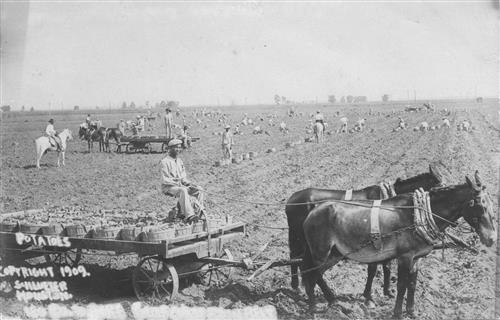Sugar Land 95
Page Navigation
Overview of Historical Context
-
Prior to the American Civil War, the main economic driver in the former Confederate States was large-scale agriculture, which was heavily dependent on forced labor in the form of chattel slavery. With the emancipation of slaves and the death of more than 250,000 men of all ages as a result of war, a serious deficit of farm labor devastated the economy of the southern states. At the end of the war, the southern states slid into an economic downturn due to this lack of labor.
Ratified in 1865, the 13th Amendment abolished slavery in the United States. According to popular belief, this amendment freed all slaves throughout the country following the war. However, upon reading the text of the amendment, it states, “Neither slavery nor involuntary servitude, except as punishment for crime, whereof the party shall have been duly convicted, shall exist within the United States, nor any place subject to their jurisdiction.” This amendment allowed a ready source of inexpensive labor by using prisoners, as long as they had been convicted of their crime by a court. In no time lawmakers across the old south began passing laws to continue their pre-war practice of using convict labor — a new form of slavery.
Photo Courtesy of: Fort Bend Historical Association, Richmond TX
Convict labor was used to rebuild the southern economy. Their free labor was instrumental to the success of many industries, as they were used to mine coal, build railroads, mill lumber, as well as farm on cotton and sugar plantations. Convict labor was even used to quarry the granite used to build the Texas State Capitol. The demand for convict labor grew as profits increased, thereby leading to the increased arrest of Black people. It was not uncommon for Black men to be arrested for minor crimes, given overinflated sentences, or even convicted based on false charges. Vagrancy statutes — laws that penalized individuals who were unemployed or homeless — brought about the increased incarceration of newly freed Black people
These laws perpetuated the convict leasing system and set the stage for the discriminatory Jim Crow laws that governed America throughout the mid-20th century.

